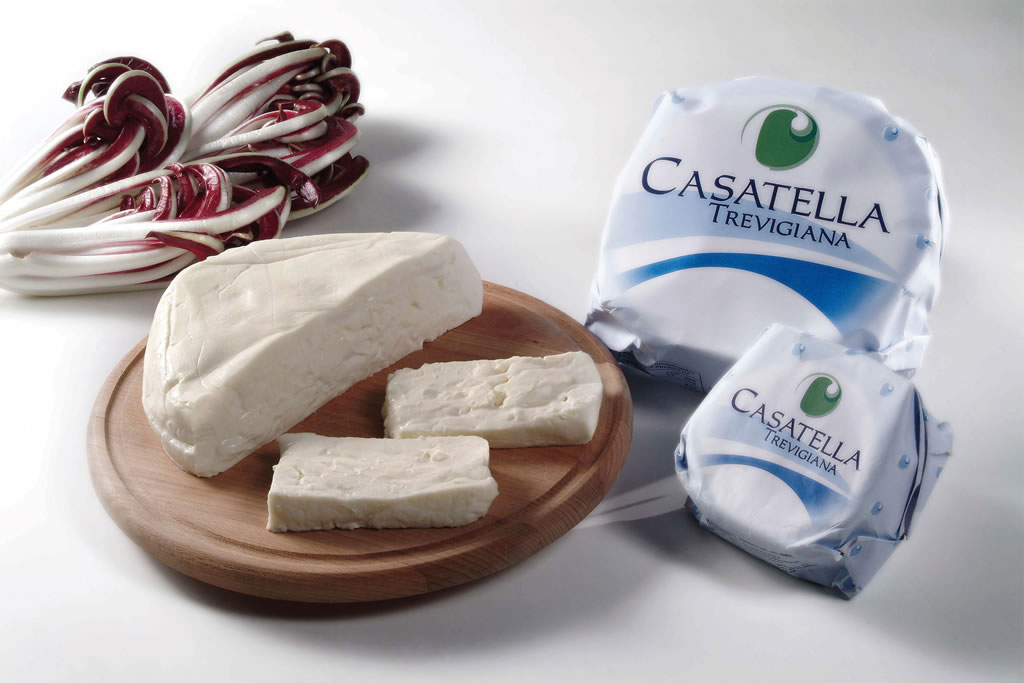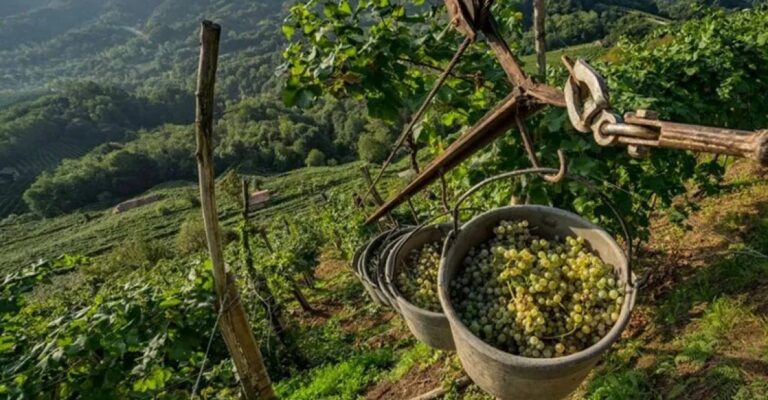
Casatella Trevigiana PDO
Casatella Trevigiana PDO has a soft, shiny, slightly whipped paste, melting in the mouth, with a milky white to creamy white color; slight minute holes are allowed. Rind absent or barely perceptible, traditionally cylindrical shape. Mild, milky and fresh scent. Sweet taste, characteristic of milk, with slightly acidic veins.
Casatella Trevigiana PDO, being a fresh cheese, can be stored at temperatures no higher than 4 ° C for no more than 10-15 days, as over time it tends to lose its main qualities.
Casatella Trevigiana PDO is a precious food that concentrates the nutritional qualities of the components of fresh milk: proteins, fats, minerals, vitamins. Given its characteristics, this cheese is able to satisfy the main food and dietary needs of children, adults and the elderly. Particularly suitable for low-calorie diets, it contains high biological value proteins, is highly digestible and with its mineral salts promotes the harmonious development and maintenance of the bone system. Finally, the vitamin content is important, in particular vit. A, D, and group B.
Product description
It is a soft raw cheese made from pasteurized cow’s milk. The faces of the shapes are almost flat or may appear slightly convex. The shape is cylindrical, with a side of about 5 cm and a diameter of about 22 cm in the large form, while in the small form the side is about 4 cm and a diameter of about 10 cm. The average weight is 1.8–2 kg for the large cheese and 0.40-0.50 kg for the small one. The paste is very soft and creamy, shiny, creamy, melting in the mouth, white or slightly straw yellow in color, slight tiny holes are allowed. The crust is absent or barely perceptible. The scent is light, milky and fresh. The taste is sweet, characteristic of milk, with a slight acidulous vein that clearly differentiates it from all the others belonging to the same product category.
Production process
The pasteurized milk must be brought to the coagulation temperature of 37-39 ° C. The acidification can be carried out by adding milk graft or direct or semi-direct inoculation enzymes that must come from cattle farms located in a typical area, delimited by administrative boundaries of the Province of Treviso. Coagulation is determined by the addition of liquid rennet for a time between 10 and 25 minutes. The curd is cross-cut, left firm and then completely broken; after purging, the curd is extracted and shaped in cylindrical molds with perforated walls. The molds continue to purge for a variable time according to the chosen format. Dry salting or more frequently in brine follows. The maturation takes place in the cell at 5-7 ° C, for 4-8 days, in molds, turning the wheels every day. The preservation takes place in a cold room at 4-5 ° C. It should be consumed within 8-10 days.
What is the PDO?
The Protected Designation of Origin designates products closely linked to the geographical region whose name they bear. In order to benefit from a D.O.P. There must be two conditions:
- the production of the raw materials and their transformation up to the finished product must be carried out in the defined region whose name the product bears;
- the quality or characteristics of the product must be due, essentially or exclusively, to the geographical environment of the place of origin, where by geographical environment we mean the set of natural and human factors, such as climate, quality ‘of the soil, local know-how.
Some data on the Consortium of the Casatella Trevigiana Dop
Dairies associated with the Consortium: 14
Commercial structure of the members: 4 cooperatives, 9 private individuals, 1 APL
Milk companies: 569
Distribution of milk conferment: 411 to cooperatives, 158 to private individuals
Quantity of milk processed in Casatella: 7,950,000 kg / year
Quantity of Casatella Trevigiana produced: 1.192.499 kg / year
Estimated turnover: 9,500,000 ˆ / year
History
Casatella is a typical cheese of the province of Treviso which was originally prepared, as well as in dairies, in the homes of peasant families using the little milk exceeding direct food uses. Most likely it took its name from “casa”, in the local language “casada”. It has played an important role in the Treviso dairy history for centuries, preserving intact the characteristics of taste and finesse that have always made it appreciated and characteristic. Due to its peculiar qualities it is well suited to Treviso cuisine and current dietary needs.
Uses
Casatella is a cheese that can be used in many ways in the kitchen, for tasty appetizers or as an ingredient for main courses. As in the past it is a rich and nutritious second cour




